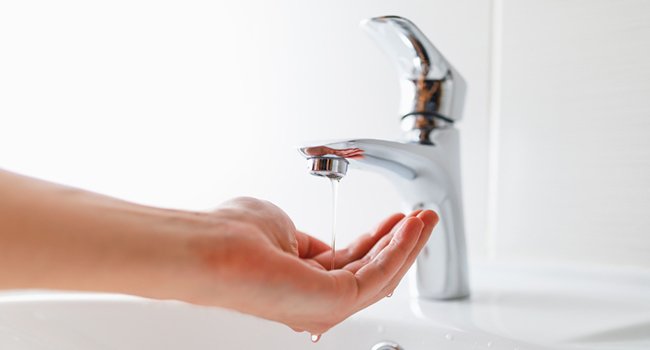Easy Actions to Raise Low Water Pressure in Your Home
Easy Actions to Raise Low Water Pressure in Your Home
Blog Article
Right here further down you can locate a bunch of wonderful information and facts involving Dealing with Low Water Pressure in Your Home.

Low tide stress in your home can be a frustrating issue, affecting every little thing from bathing to washing meals. If you're experiencing weak water circulation, there are several feasible causes and remedies to discover. In this overview, we'll talk about common reasons for low tide stress and practical actions to resolve the problem successfully.
Introduction to Low Tide Pressure
Low water pressure occurs when the flow of water from your taps, showers, and other fixtures is weaker than usual. This can make daily jobs much more difficult and much less efficient. Comprehending the reasons for low tide pressure is essential to discovering the appropriate solution.
Common Reasons For Low Tide Stress
Pipeline Obstructions
In time, pipes can become clogged with natural resource, sediment, or debris, limiting the flow of water. This is a typical problem in older homes with galvanized steel pipelines.
Corrosion
Corrosion within pipelines can cause leaks and minimized water stress. Corrosion accumulation can constrict water flow, specifically in maturing plumbing systems.
Faulty Pressure Regulators
Stress regulatory authorities are in charge of keeping consistent water pressure in your house. If they malfunction, it can lead to low water pressure or irregular flow throughout your house.
Community Supply Of Water Issues
Sometimes, the problem exists outside your home. Local supply of water problems, such as main line leakages or upkeep work, can temporarily minimize water pressure in your location.
Exactly How to Diagnose Low Water Stress
Examining Faucets and Fixtures
Beginning by evaluating the water pressure at different taps and fixtures throughout your home. If the concern is isolated to certain areas, it might indicate localized troubles.
Evaluating Pipes
Inspect visible pipelines for signs of leaks, rust, or blockages. Pay attention to any type of uncommon audios, such as knocking or rattling pipelines, which can indicate issues within the plumbing system.
Consulting with a Plumber
If you're not able to determine the reason for low water stress, take into consideration hiring an expert plumber to perform a thorough inspection. They can identify underlying issues and suggest proper options.
Do It Yourself Solutions to Take Care Of Low Water Stress
Cleaning Aerators and Showerheads
Mineral deposits can gather in aerators and showerheads, minimizing water flow. Remove and clean up these components frequently to enhance water stress.
Flushing Water Heater
Sediment build-up in the hot water heater can restrict flow and reduce performance. Purging the storage tank periodically assists get rid of sediment and maintain ideal performance.
Inspecting Stress Regulatory Authority
Ensure that the stress regulator is operating properly. Adjusting or changing the regulatory authority can aid recover correct water pressure throughout your home.
Clearing Clogs in Water Lines
For minor clogs, attempt utilizing a plumbing serpent or chemical drainpipe cleaner to clear blockages in pipelines. Beware when utilizing chemicals and comply with security standards.
When to Call an Expert Plumber
If do it yourself efforts fall short to resolve the issue or if you presume significant plumbing troubles, it's ideal to seek aid from a qualified plumber. They have the knowledge and tools to attend to complex issues securely and efficiently.
Preventive Measures to Maintain Water Stress
Routine Maintenance
Set up regular upkeep for your plumbing system to avoid issues such as deterioration, leaks, and obstructions. Dealing with small problems early can aid prevent even more considerable repair work in the future.
Setting Up a Stress Booster
Take into consideration setting up a stress booster pump to boost water stress in locations with consistently reduced circulation. This can be specifically useful for multi-story homes or residential properties with high-demand components.
Monitoring Water Use
Be mindful of water use practices and stay clear of overtaxing the plumbing system. Basic adjustments, such as shocking showers and laundry lots, can aid maintain appropriate water stress.
Verdict
Managing low tide pressure can be frustrating, however determining the underlying causes and implementing ideal options can restore optimum flow throughout your home. Whether it's cleansing aerators, evaluating pipes, or seeking advice from a plumber, taking aggressive actions can make certain a stable supply of water for your day-to-day requirements.
FOUR WAYS TO FIX LOW WATER PRESSURE NOW
Turning on a shower or faucet only to find the water comes out in a sad, slow drizzle is never a good feeling. How exactly are you supposed to wash a pan or take a quick shower when it takes 10 minutes just to rinse off a little soap? The good news is that when your water pressure is bad, there's always a cause: typically one that can be easily fixed. Here are some of the most common causes of low pressure and what you can do to fix the issue:
DEBRIS AND MINERAL DEPOSIT BUILDUPS
If you notice low water pressure from just one or two of the fixtures in your house, the problem likely has to do with debris buildup. Water is full of minerals and other debris, all of which can accumulate in your pipes and on your fixtures. This can cause a blockage that affects how much water flows through. To fix this, try filling a small plastic bag with white vinegar, and use a rubber band to hang it around your showerhead or faucet. Let the head of the fixture soak for a few hours, and the vinegar should loosen the deposits.
WATER LEAKS
Leaks are another common cause of low water pressure. If water is flowing out of your plumbing through a hole or crack before it can reach your fixture, the pressure coming out of the faucet or showerhead will be lower. A plumbing professional is your best bet for finding and repairing a leak in your water supply pipes.
Leaks are another common cause of low water pressure. If water is flowing out of your plumbing through a hole or crack before it can reach your fixture, the pressure coming out of the faucet or showerhead will be lower. A plumbing professional is your best bet for finding and repairing a leak in your water supply pipes.
FOUR WAYS TO FIX LOW WATER PRESSURE NOW
Turning on a shower or faucet only to find the water comes out in a sad, slow drizzle is never a good feeling. How exactly are you supposed to wash a pan or take a quick shower when it takes 10 minutes just to rinse off a little soap? The good news is that when your water pressure is bad, there's always a cause: typically one that can be easily fixed. Here are some of the most common causes of low pressure and what you can do to fix the issue:
DEBRIS AND MINERAL DEPOSIT BUILDUPS
If you notice low water pressure from just one or two of the fixtures in your house, the problem likely has to do with debris buildup. Water is full of minerals and other debris, all of which can accumulate in your pipes and on your fixtures. This can cause a blockage that affects how much water flows through. To fix this, try filling a small plastic bag with white vinegar, and use a rubber band to hang it around your showerhead or faucet. Let the head of the fixture soak for a few hours, and the vinegar should loosen the deposits.
WATER LEAKS
Leaks are another common cause of low water pressure. If water is flowing out of your plumbing through a hole or crack before it can reach your fixture, the pressure coming out of the faucet or showerhead will be lower. A plumbing professional is your best bet for finding and repairing a leak in your water supply pipes.
Leaks are another common cause of low water pressure. If water is flowing out of your plumbing through a hole or crack before it can reach your fixture, the pressure coming out of the faucet or showerhead will be lower. A plumbing professional is your best bet for finding and repairing a leak in your water supply pipes.
A VALVE ISSUE
If you have low water pressure throughout your home, check your main shut-off valve to make sure it's completely open. You may also want to see if there's a pressure-reducing valve installed. If there is, have a plumber help you adjust the settings to get the pressure you're looking for.
OTHERS USING WATER
Believe it or not, your low water pressure could be caused by your neighbors. If you notice low pressure at certain times of day, it may be because you and the people living next to you have similar schedules - when everyone is showering at the same time, the pressure will be lower in every home. Low pressure throughout the neighborhood may also be caused by an issue with your municipal water supply. If that's the case, call the supplier to see if they're working on the issue.
https://www.rotorooter.com/blog/water-leaking/low-water-pressure-fixes/

Do you enjoy more info about Dealing with Low Water Pressure in Your Home? Make a remark down the page. We'd be glad to know your feelings about this page. Hoping that you visit us again in the near future. In case you appreciated our page kindly remember to share it. We enjoy reading our article about Dealing with Low Water Pressure in Your Home.
Call Report this page